Tens of thousands of protesters yesterday joined a pro-democracy march in Hong Kong, the anniversary of the territory’s handover to China, in what organizers described as an opportunity to work out the movement’s next step.
Crowds gathered in Victoria Park in the afternoon, many carrying yellow umbrellas — a symbol of the democracy movement — before marching to the government’s offices in central Hong Kong.
“The most important thing is to express disapproval to the Hong Kong and Chinese communist government for suppressing the freedoms of Chinese people and real elections for Hong Kong people,” protester Wong Man-ying, 61, said.

Photo: EPA
“Things are quickly transforming to fit a Chinese model,” office clerk Anna Cheung added. “We need Beijing to hear our voices.”
The march’s organizers, Civil Human Rights Front, said the turnout was 48,000, lower than in previous years, after almost 12 months of rallies in the territory.
Last year’s march saw huge crowds gather as discontent surged over restrictions by Beijing on how Hong Kong would choose its next leader, and organizers said a record 510,000 attended.

Photo: EPA
“Momentum has slowed down after the veto over political reform,” Civil Human Rights Front’s Johnson Yeung (楊政賢) said, but he insisted turnout numbers this year were not important.
Instead the march was a chance to reshape the message of the democracy movement, he said, which has splintered since the end of the mass rallies in December last year.
“Right now people are asking: ‘What next?’ after the veto,” Yeung said. “We hope the march can set the political agenda and give citizens a chance to discuss how to bring the democratic movement forward.”
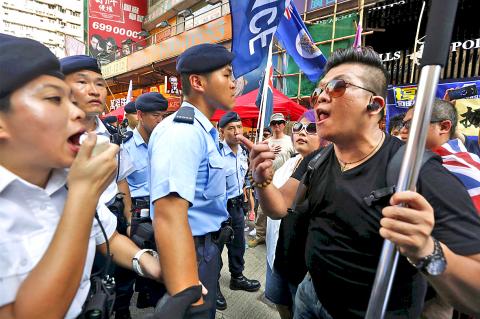
Photo: Reuters
Political groups set up stalls and addressed the crowds on loudspeakers while protesters fanned themselves in the oppressive heat.
In a speech at a ceremony for the handover anniversary, Hong Kong Chief Executive Leung Chun-ying (梁振英) criticized lawmakers who rejected the reform package, using instability in Europe to argue that other issues should now take precedence over democratic reforms.
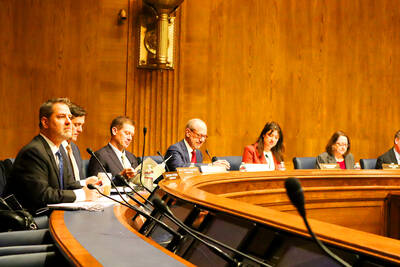
LIMITS: While China increases military pressure on Taiwan and expands its use of cognitive warfare, it is unwilling to target tech supply chains, the report said US and Taiwan military officials have warned that the Chinese People’s Liberation Army (PLA) could implement a blockade within “a matter of hours” and need only “minimal conversion time” prior to an attack on Taiwan, a report released on Tuesday by the US Senate’s China Economic and Security Review Commission said. “While there is no indication that China is planning an imminent attack, the United States and its allies and partners can no longer assume that a Taiwan contingency is a distant possibility for which they would have ample time to prepare,” it said. The commission made the comments in its annual
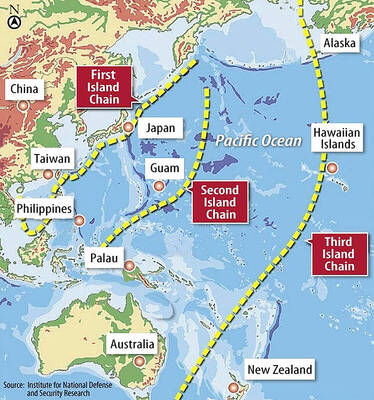
DETERMINATION: Beijing’s actions toward Tokyo have drawn international attention, but would likely bolster regional coordination and defense networks, the report said Japanese Prime Minister Sanae Takaichi’s administration is likely to prioritize security reforms and deterrence in the face of recent “hybrid” threats from China, the National Security Bureau (NSB) said. The bureau made the assessment in a written report to the Legislative Yuan ahead of an oral report and questions-and-answers session at the legislature’s Foreign Affairs and National Defense Committee tomorrow. The key points of Japan’s security reforms would be to reinforce security cooperation with the US, including enhancing defense deployment in the first island chain, pushing forward the integrated command and operations of the Japan Self-Defense Forces and US Forces Japan, as
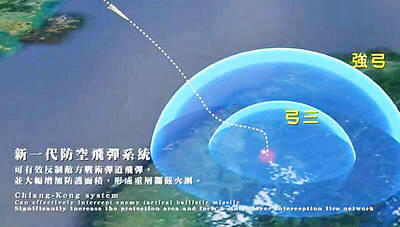
INTERCEPTION: The 30km test ceiling shows that the CSIST is capable of producing missiles that could stop inbound missiles as they re-enter the atmosphere Recent missile tests by the Chungshan Institute of Science and Technology (CSIST) show that Taiwan’s missiles are capable of intercepting ballistic missiles as they re-enter the atmosphere and pose a significant deterrent to Chinese missile threats, former Hsiung Feng III missile development project chief engineer Chang Cheng (張誠) said yesterday. The military-affiliated institute has been conducting missile tests, believed to be related to Project Chiang Kung (強弓) at Pingtung County’s Jiupeng Military Base, with many tests deviating from past practices of setting restriction zones at “unlimited” and instead clearly stating a 30.48km range, Chang said. “Unlimited” restrictions zones for missile tests is
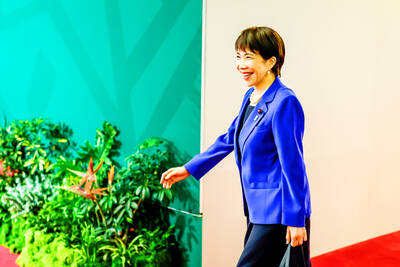
NO CHANGES: A Japanese spokesperson said that Tokyo remains consistent and open for dialogue, while Beijing has canceled diplomatic engagements A Japanese official blasted China’s claims that Japanese Prime Minister Sanae Takaichi has altered Japan’s position on a Taiwan crisis as “entirely baseless,” calling for more dialogue to stop ties between Asia’s top economies from spiraling. China vowed to take resolute self-defense against Japan if it “dared to intervene militarily in the Taiwan Strait” in a letter delivered Friday to the UN. “I’m aware of this letter,” said Maki Kobayashi, a senior Japanese government spokeswoman. “The claim our country has altered its position is entirely baseless,” she said on the sidelines of the G20 summit in Johannesburg on Saturday. The Chinese Ministry